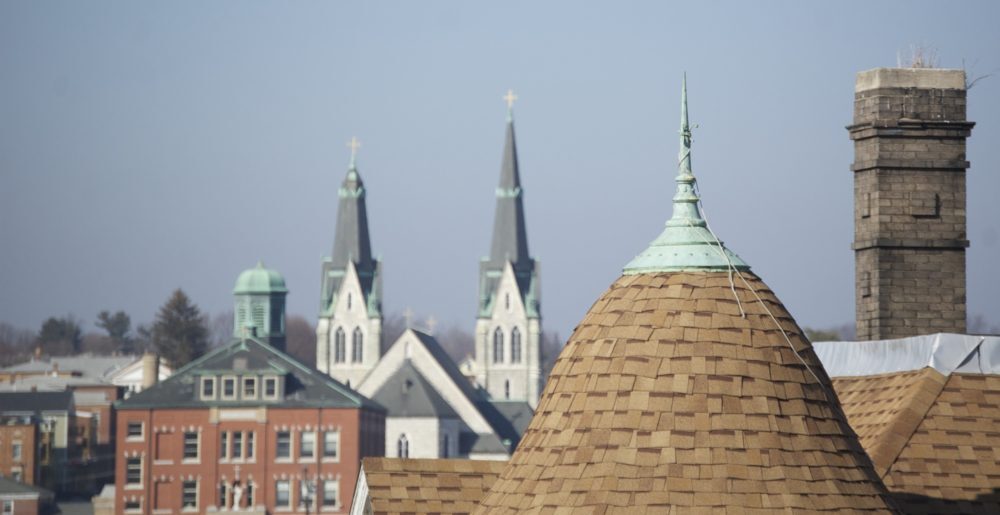Dear New Britain,
When I lived in you, years ago, you didn’t have much going on.
There were one or two restaurants anyone ever sought out. Nobody talked much about your art museum, even if it was as fabulous then as now. Scattered community events were hard to find out about. Aside from baseball games at the stadium a few blocks away from where I was living, I could not say what drew a crowd.
You looked and felt like post-industrial town heaving its last breath.
Your roadways were overbuilt. Nothing about you invited walking or biking.
It was not hard to leave you.
And then, something happened. For having paid little attention to you since, I can only make a few guesses as to why you changed.
Last month, seemingly out of nowhere, a portion of Jubilee Street was closed to motorized traffic. That detail was somewhat buried in the news coverage of the event, which involved painting a honeycomb mural directly on the street. City employees, including Mayor Stewart, joined with volunteers to beautify the street.
Your honeycomb art is only the most recent improvement that is relatively cheap and effortless, and which other municipalities in the area are hesitant to adopt.
New Britain, your “can” attitude is refreshing.
At Transport Hartford’s Multimodal Transit Summit on Monday, New Britain’s Director of Public Works, Mark Moriarty, explained: “We bought into Complete Streets and placemaking.”
Can it be that simple?
Moriarty acknowledged that “people are resistant to change everywhere,” but the mayor and police chief quickly came around. Your current mayor is a Republican, yet she understands the need for progress.
The changes to Jubilee Street were not planned to death, and that’s part of what is making you so attractive right now, New Britain. It began in September; paint hit the road in October. “We’re known in New Britain for moving projects fast and we get grant money for moving projects fast,” Moriarty explained.
While there were aspects that he would do differently next time, Moriarty promoted tactical urbanism as a way to test ideas before making more permanent changes. For this paint project, he said, they “didn’t need to have the last detail figured out before [taking] the first step.”
A beautification project that removes a redundant street leg? Moriarty called it “a no brainer. It’s a useless section of road.”
For such a small city, you are nailing it in the Complete Streets and bicycle infrastructure realm. You’ve gotten a grasp on other issues of access with the free open WiFi in downtown, which looks like it will be expanding to other areas.
In the drama of losing a minor league baseball team, you used the opportunity to revamp the existing stadium and launch a rebranding campaign. Even your City website is on message, and, useful. Without wasting my morning, I was able to locate the emails and phone numbers of your City Council members, along with what subcommittees they serve on.
Why did you change? Or rather, what enabled this? Was it having younger leadership? Is it the range of political perspectives represented in New Britain? Are you scrappier than the average small city? Were you just tired of feeling faded and figured it was now or never? All of those? None? Whatever it is, thanks for showing that “Yes, and…” is an appropriate answer when it comes to change.

kob
I liked this post a lot. Well stated. Lived in New Britain for nearly 20 years, but have since moved for reasons that have nothing to do with New Britain. I really like the place. and Its focus on bicycle infrastructure, walkability and transit — this a city that moves incrementally but steadily toward a goal creating a place that people really want to live in. The politics aren’t crippling. People there elected a young mayor — and in a Democratic city — who they believed capable and voters were correct in their choice. A lot of people are really loyal to New Britain. They like it and have faith in it. Thanks for this upbeat assessment.